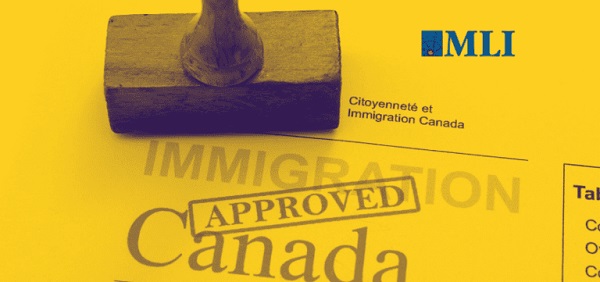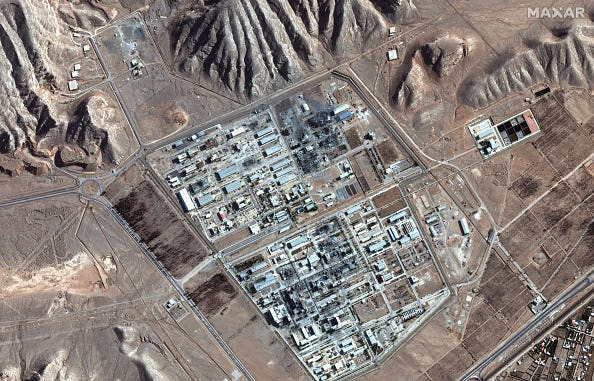Economy
Federal mismanagement to blame for Canada’s immigration backlash

From the Macdonald Laurier Institute
By Sonia Orlu for Inside Policy
Canada’s welcoming attitude towards newcomers makes it one of the most sought-after places to live in the world. However, this image is being tested by a growing backlash against immigration. Immigrants make up 23 per cent of the population, yet economic, social, and cultural anxieties are increasingly challenging the country’s commitment to diversity. More than four-in-ten Canadians now agree – either strongly (23 per cent) or somewhat (21 per cent) – with the statement, “There is too much immigration to Canada.” It is crucial to understand that this backlash is not rooted in opposition to immigration or immigrants themselves, but rather in frustration over mismanagement and inadequate planning by the federal government. It reflects a growing unease about the country’s economic outlook, raising urgent questions about how Canada can uphold its values while addressing legitimate and pressing concerns.
Public reactions and political responses
Canadian political leaders have generally maintained a measured tone on immigration, focusing on economic pressures and service delivery rather than hostility toward immigrants. However, tensions are rising, and a thoughtful debate is increasingly needed.
Prime Minister Justin Trudeau has accused the Conservative Party of spreading misinformation to stoke fears about immigration. Such remarks risk alienating those with legitimate critiques of his administration’s policies and practices. Conservative Leader Pierre Poilievre has linked immigration to housing shortages, criticizing Trudeau’s policies as disconnected from infrastructure needs. This aligns with public frustrations over housing availability and the need for better coordination between immigration levels and capacity. Quebec Premier François Legault echoed similar sentiments, raising issues of resource management and culture. His critics accuse him of xenophobia, but dismissive responses like Immigration Minister Marc Miller’s remark that people are “always blaming immigrants” overlook genuine challenges and deepen frustration.
These exchanges illustrate the delicate balance required in navigating immigration policy and public sentiment. Canadians’ attitudes toward immigration are more nuanced than a simple pro- or anti-immigration divide. Most Canadians aren’t driven by fear or racism; rather, they are focused on how immigration impacts housing affordability, strains public finances, and increases job competition. While apprehension about immigration levels is growing, attitudes toward immigrants themselves remain largely positive. In fact, more than four-in-ten Canadians (42 per cent) say that immigrants make their community a better place, with fewer than one-in-ten (9 per cent) feeling that they make it worse. Still, public concerns must be addressed to prevent further polarization.
The housing crisis: a catalyst for frustration
A significant driver of the immigration backlash is the housing crisis. The Canada Mortgage and Housing Corporation (CMHC) reported in 2024 that Canada needs an additional 3.5 million housing units by 2030 to restore affordability. Cities like Toronto and Vancouver have seen housing prices soar, partly due to increased demand from population growth.
The “housing theory of everything” highlights how housing affects multiple societal issues – such as economic inequality, social mobility, and political polarization. Immigration is no exception. Housing shortages drive up costs, deepen inequality, and create competition between immigrants and long-term residents, eroding social trust and cohesion.
The rise in temporary residents, including international students and temporary foreign workers, compounds these issues. Immigration, Refugees and Citizenship Canada (IRCC) reports that the number of temporary residents increased by over 50 per cent from 2017 to 2022 and continued to rise sharply into 2024. This influx contributes to increased demand in the rental housing market, particularly in urban centres with large universities, driving up prices and reducing availability.
The Trudeau government’s ambitious plan to admit nearly 500,000 new permanent residents annually by 2026 marks one of the highest per-capita immigration rates globally. By comparison, Canada admitted around 200,000 landed immigrants per year in the 1990s and 250,000 per year in the early 2010s. Without matching investments in infrastructure and housing, these elevated immigration levels – often referred to as “mass immigration” – could exacerbate housing shortages, strain public services, and heighten public frustration. Internal documents from Immigration, Refugees, and Citizenship Canada revealed that as early as 2022, officials warned that large increases in immigration could worsen housing affordability and strain public services. Yet, no substantive steps were taken by the government to revise its targets.
Given the realistic timelines for development, it is improbable that infrastructure can keep pace with rapid population growth. The construction industry faces labour shortages, regulatory hurdles, and lengthy timelines for project completion – often several years. The CMHC maintains that due to these complexities, expecting cities to rapidly scale up infrastructure to meet immediate demands is unrealistic.
If these housing issues are not resolved, public frustration could escalate, potentially shifting from concerns about immigration policy to resentment toward immigrants themselves.
Cultural integration: balancing diversity and cohesion
Economic challenges, such as housing affordability, often intersect with social and cultural anxieties. As communities experience rapid change and strained resources, questions arise about society’s ability to integrate newcomers without compromising its social fabric. While only about 4 per cent of Canadians express fears that immigration weakens local culture and identity, concerns about the effectiveness of integration are more widespread. In fact, approximately half of Canadians are concerned that some immigrants may not be adopting Canadian values or fully participating in the broader community. When asked which values immigrants should adopt, Canadians often prioritize language proficiency and respect for the country’s history and culture, highlighting the importance placed on cultural integration. Interestingly, both native-born and foreign-born Canadians largely agree on the values newcomers should embrace, indicating a shared vision for integration.
Canada’s sense of nationhood is deeply tied to its history of migration and its commitment to cultural and ethnic diversity. However, diversity is not inherently beneficial in all forms; its value depends on whether it leads to greater tolerance, creativity, or economic growth. When cultural and ethnic diversity is celebrated without deliberate efforts to foster interaction and promote unity, it risks becoming fragile. Poorly managed diversity can lead to social fragmentation, lower trust, and weakened civic engagement.
The challenges of integration are well-documented. Language barriers, different social norms, and unfamiliarity with Canadian institutions can make it difficult for immigrants to fully integrate. This can sometimes lead to the formation of cultural enclaves, where newcomers find comfort in communities with shared backgrounds but have limited interaction with the broader society. While these enclaves provide crucial support, they can inadvertently hinder full participation in Canadian life. Sociologist Robert Putnam found that, in the short term, diversity can reduce social capital and lower community engagement, particularly when institutions fail to promote integration – a concept he refers to as “hunkering down.” In such cases, both newcomers and long-term residents may feel isolated.
Despite these challenges, diversity, when managed effectively, can yield benefits. Exposure to different cultures fosters creativity, innovation, and economic growth, even though research suggests that immigration itself is neither inherently good nor bad for the economy. Cities like Toronto and Vancouver have thrived in part due to their multicultural populations, which have helped them become global hubs for technology and the arts. Additionally, evidence shows that successful integration is common in Canada. Many immigrants actively embrace Canadian values, contribute to the economy, and participate in civic life. The majority of eligible immigrants become Canadian citizens, demonstrating a strong commitment to their new country. Many immigrants choose Canada precisely because they align with its principles of democracy, equality, and respect for human rights. Cultural integration, in the end, is a dynamic process – one that, when approached thoughtfully, strengthens rather than weakens the social fabric.
Bridging policy failures with sustainable solutions
Addressing public frustrations with immigration requires a serious reassessment of the policies that have exacerbated these concerns.
First and foremost, tackling the housing crisis through integrated planning is essential. Governments should incentivize affordable housing development and reform zoning laws to allow for higher-density projects. Recognizing the realistic timelines for construction and development, planning must begin immediately and be synchronized with immigration targets. Public sentiment strongly supports this approach. A recent Nanos Research survey found that 72 per cent of Canadians want to reduce immigration levels until housing becomes affordable.
Aligning immigration levels with the country’s capacity is crucial. Dynamic targets based on real-time economic data and infrastructure development would ensure that immigration aligns with Canada’s ability to provide services and opportunities. Returning to historical admission levels of 200,000 to 250,000 immigrants per year could help ease pressure on housing and public services. Adjusting the composition of immigration streams is equally important.
Temporary measures – such as pausing or reducing programs for international students and temporary foreign workers – could relieve immediate pressures while infrastructure catches up. For instance, although international students contributed over $30 billion to the economy in 2022, lowering their numbers could help reduce housing demand in university towns. Likewise, managing temporary foreign worker intake would address labour shortages without overwhelming resources.
Effective integration and support services must also be given priority. This should begin with implementing consistent selective immigration measures that evaluate an applicant’s potential to integrate both economically and culturally into Canadian society. Such measures would reduce reliance on extensive post-arrival support and help ease cultural tensions. According to a 2018 Angus Reid survey, two-in-three Canadians believe that greater emphasis should be placed on screening for alignment with Canadian values. However, it’s important to note that defining “Canadian values” can be subjective and risks being perceived as discriminatory.
Improvements to post-arrival services like community centres offering language classes, job search support, and cultural orientation programs are necessary to significantly ease the transition for newcomers. Research shows that when immigrants are effectively integrated, they are more likely to find employment, increasing tax contributions and reducing their reliance on social services. Additionally, well-integrated immigrants are more likely to engage in civic life, fostering social cohesion and strengthening community resilience.
Cultural diversity, while valuable, cannot be assumed to sustain itself without active support. Integration is not just about where people live or demographic representation; it also involves cultivating a shared sense of purpose and belonging. Successful integration depends on a reciprocal relationship: immigrants need the resources and opportunities to succeed, and in turn, they must engage with and contribute to the broader societal and cultural framework. Without deliberate policies that encourage community engagement, cross-cultural dialogue, and mutual respect, there is a risk that cultural diversity will falter.
Finally, responsible political discourse is crucial. Leaders must choose their words carefully, as rhetoric shapes public perceptions. By fostering nuanced and empathetic dialogue, they can bridge the gap between public concerns and policy realities, preserving national unity.
Canada stands at a crossroads. While immigration has long been one of our greatest assets, the current backlash highlights cracks in its management. This is not a rejection of immigrants – it’s a call for better policies and improved management. High immigration levels without careful planning will continue to harm our society. Our leaders now face a choice: fan the flames of division or unite the country around meaningful, evidence-based solutions.
Sonia Orlu is a Ph.D. student in Political Science at Simon Fraser University and a commentator on politics and culture. She is a contributing writer to the Macdonald-Laurier Institute.
Business
Canada’s loyalty to globalism is bleeding our economy dry

This article supplied by Troy Media.
Trump’s controversial trade policies are delivering results. Canada keeps playing by global rules and losing
U.S. President Donald Trump’s brash trade agenda, though widely condemned, is delivering short-term economic results for the U.S. It’s also revealing the high cost of Canada’s blind loyalty to globalism.
While our leaders scold Trump and posture on the world stage, our economy is faltering, especially in sectors like food and farming, which have been sacrificed to international agendas that don’t serve Canadian interests.
The uncomfortable truth is that Trump’s unapologetic nationalism is working. Canada needs to take note.
Despite near-universal criticism, the U.S. economy is outperforming expectations. The Federal Reserve Bank of Atlanta projects 3.8 per cent second-quarter GDP growth.
Inflation remains tame, job creation is ahead of forecasts, and the trade deficit is shrinking fast, cut nearly in half. These results suggest that, at least in the short term, Trump’s economic nationalism is doing more than just stirring headlines.
Canada, by contrast, is slipping behind. The economy is contracting, manufacturing is under pressure from shifting U.S. trade priorities, and food
inflation is running higher than general inflation. One of our most essential sectors—agriculture and food production—is being squeezed by rising costs, policy burdens and vanishing market access. The contrast with the U.S. is striking and damning.
Worse, Canada had been pushed to the periphery. The Trump administration had paused trade negotiations with Ottawa over Canada’s proposed digital services tax. Talks have since resumed after Ottawa backed away from implementing it, but the episode underscored how little strategic value
Washington currently places on its relationship with Canada, especially under a Carney-led government more focused on courting Europe than securing stable access to our largest export market. But Europe, with its own protectionist agricultural policies and slower growth, is no substitute for the scale and proximity of the U.S. market. This drift has real consequences, particularly for
Canadian farmers and food producers.
The problem isn’t a trade war; it’s a global realignment. And while Canada clings to old assumptions, Trump is redrawing the map. He’s pulling back from institutions like the World Health Organization, threatening to sever ties with NATO, and defunding UN agencies like the Food and Agriculture Organization (FAO), the global body responsible for coordinating efforts to improve food security and support agricultural development worldwide. The message is blunt: global institutions will no longer enjoy U.S. support without measurable benefit.
To some, this sounds reckless. But it’s forcing accountability. A senior FAO official recently admitted that donors are now asking hard questions: why fund these agencies at all? What do they deliver at home? That scrutiny is spreading. Countries are quietly realigning their own policies in response, reconsidering the cost-benefit of multilateralism. It’s a shift long in the making and long resisted in Canada.
Nowhere is this resistance more damaging than in agriculture. Canada’s food producers have become casualties of global climate symbolism. The carbon tax, pushed in the name of international leadership, penalizes food producers for feeding people. Policies that should support the food and farming sector instead frame it as a problem. This is globalism at work: a one-size-fits-all policy that punishes the local for the sake of the international.
Trump’s rhetoric may be provocative, but his core point stands: national interest matters. Countries have different economic structures, priorities and vulnerabilities.
Pretending that a uniform global policy can serve them all equally is not just naïve, it’s harmful. America First may grate on Canadian ears, but it reflects a reality: effective policy begins at home.
Canada doesn’t need to mimic Trump. But we do need to wake up. The globalist consensus we’ve followed for decades is eroding. Multilateralism is no longer a guarantee of prosperity, especially for sectors like food and farming. We must stop anchoring ourselves to frameworks we can’t influence and start defining what works for Canadians: secure trade access, competitive food production, and policy that recognizes agriculture not as a liability but as a national asset.
If this moment of disruption spurs us to rethink how we balance international cooperation with domestic priorities, we’ll emerge stronger. But if we continue down our current path, governed by symbolism, not strategy, we’ll have no one to blame for our decline but ourselves.
Dr. Sylvain Charlebois is a Canadian professor and researcher in food distribution and policy. He is senior director of the Agri-Food Analytics Lab at Dalhousie University and co-host of The Food Professor Podcast. He is frequently cited in the media for his insights on food prices, agricultural trends, and the global food supply chain
Troy Media empowers Canadian community news outlets by providing independent, insightful analysis and commentary. Our mission is to support local media in helping Canadians stay informed and engaged by delivering reliable content that strengthens community connections and deepens understanding across the country
Business
Carney’s spending makes Trudeau look like a cheapskate

This article supplied by Troy Media.
 By Gwyn Morgan
By Gwyn Morgan
The Carney government’s spending plans will push Canada’s debt higher, balloon the deficit, and drive us straight toward a credit downgrade
Prime Minister Mark Carney was sold to Canadians as the grown-up in the room, the one who’d restore order after Justin Trudeau’s reckless deficits. Instead, he’s spending even more and steering Canada deeper into trouble. His newly unveiled fiscal plan will balloon the deficit, drive up
interest costs and put Canada’s credit rating and economic future in jeopardy.
When Trudeau first ran for office, he promised “modest short-term deficits” of under $10 billion annually and a balanced budget by 2019. Instead, he ran nine consecutive deficits, peaking at $62 billion in 2023–24, and nearly doubled the national debt, from $650 billion to $1.236 trillion. That
reckless spending should have been a warning.
Yet Carney, presented for years as a safe, globally respected economic steward, is proving to be anything but. The recently released Main Estimates (the federal government’s official spending blueprint) project program spending will rise 8.4 per cent in 2025–26 to $488 billion. Add in at least $50 billion to service the national debt, and the federal tab balloons to $538 billion.
Even assuming tax revenues stay flat, we’re looking at a $40-billion deficit. But that’s optimistic. The ongoing tariff war with the United States, now hitting everything from autos to metals to consumer goods, is cutting deep into economic output. That means weaker revenues and a much larger shortfall. Carney’s response? Spend even more.
And the Canadian dollar is already paying the price. Since 2015, the loonie has slipped from 78 cents U.S. to 73. Carney’s spending spree is likely
to drive it even lower, eroding the value of Canadians’ wages, savings and retirement funds. Inflation? Buckle up.
Franco Terrazzano of the Canadian Taxpayers Federation nailed it in a recent Financial Post column: “Mark Carney was right: He’s not like Justin Trudeau, he spends more,” Terrazzano argues. “The government will spend $49 billion on interest this year and the Parliamentary Budget Officer projects interest charges will be blowing a $70-billion hole in the budget by 2029. That means our kids and grandkids will be making payments on Ottawa’s debt for the rest of their lives.”
Meanwhile, Canada’s credit rating is under real threat. An April 29 report by Fitch Ratings warned that “Canada has experienced rapid and steep fiscal deterioration, driven by a sharply weaker economic outlook and increased government spending during the electoral cycle. If the Liberal program is implemented, higher deficits are likely to increase federal, provincial and local debt to above 90 per cent of GDP.”
That’s not just a red flag; it’s a fire alarm. A downgraded credit rating means Ottawa will pay more to borrow, which trickles down to higher interest rates on everything from provincial debt to mortgages and business loans.
But this decline didn’t start with tariffs. The rot runs deeper. One of the clearest signs of a faltering economy is falling business investment per worker. According to the C.D. Howe Institute, investment has been shrinking since 2015. Canadian businesses now invest just 66 cents of new capital for every dollar invested by their OECD counterparts; only 55 cents compared to U.S. firms. That means less productivity, fewer wage gains and stagnating living standards.
Why is investment collapsing? Policy. Regulation. Taxes. Uncertainty.
The C.D. Howe report laid out a straightforward to-do list, one the federal government continues to ignore:
Reform corporate taxes to attract capital investment.
Introduce early-stage investment incentives.
Tear down regulatory barriers delaying resource and infrastructure projects, especially in energy (maybe then Alberta won’t feel like seceding).
Promote IP investment with targeted tax credits.
Bring stability and predictability back to the regulatory process.
Instead, what Canadians get is policy chaos and endless virtue-signalling. That’s no substitute for economic growth. And let’s talk about Carney’s much-touted past. Voters were bombarded with reminders that he led the Bank of Canada during the 2008–09 financial crisis. But it was Jim Flaherty, Stephen Harper’s finance minister, who made the hard fiscal decisions that got the country through it. Carney’s tenure at the Bank of England? A different story. As former U.K. Prime Minister Liz Truss put it: “Mark Carney did a terrible job” at the Bank of England. “He printed money to a huge extent, creating inflation.”
Fast-forward to today, and Canada’s performance is nothing short of dismal. Our GDP per capita sits at just $53,431, compared to America’s $82,769. That’s not just a bragging-rights statistic. It reflects real differences in productivity, competitiveness and national prosperity. Worse, over the past 10 years, Canada’s per capita GDP has grown just 1.1 per cent, second worst in the OECD, ahead of only Luxembourg.
We remain a great country filled with capable people, but our most significant fault may be how easily we fall for image over substance. First with Trudeau’s sunny ways. Now with Carney’s global banker persona. The reality? His plan risks stripping Canadians of their prosperity, downgrading our creditworthiness and deepening long-term decline.
It pains me to say it, but unless something changes fast, Canadians face continued erosion in their standard of living and inflation-driven losses in their savings. The numbers are grim. The direction is wrong. And the consequences are generational.
Trudeau fooled voters with promises of restraint. Carney’s now asking for the same trust, with an even bigger bill attached. Canadians can’t afford to make the same mistake twice.
Gwyn Morgan is a retired business leader who has been a director of five global corporations
-

 Energy1 day ago
Energy1 day agoB.C. Residents File Competition Bureau Complaint Against David Suzuki Foundation for Use of False Imagery in Anti-Energy Campaigns
-

 Alberta2 days ago
Alberta2 days agoAlberta uncorks new rules for liquor and cannabis
-

 COVID-191 day ago
COVID-191 day agoCourt compels RCMP and TD Bank to hand over records related to freezing of peaceful protestor’s bank accounts
-

 Crime2 days ago
Crime2 days agoProject Sleeping Giant: Inside the Chinese Mercantile Machine Linking Beijing’s Underground Banks and the Sinaloa Cartel
-

 C2C Journal1 day ago
C2C Journal1 day agoCanada Desperately Needs a Baby Bump
-

 International1 day ago
International1 day agoTrump transportation secretary tells governors to remove ‘rainbow crosswalks’
-

 Alberta1 day ago
Alberta1 day agoAlberta Next: Alberta Pension Plan
-

 conflict16 hours ago
conflict16 hours agoUS airstrike on Iran’s nuclear facilities. Was it obliteration?



